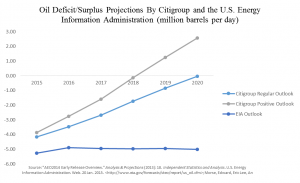The Effect of President Obama’s Keystone XL Veto
President Obama officially vetoed the Keystone XL pipeline project after bipartisan votes by both the House and Senate landed the bill on his desk. Without the Senate to block legislation from getting to his desk, the president is now planning to veto many bills that pass both houses. Veto-proof coalitions are now needed to pass legislation that provides benefits like the Keystone XL project.
The entire Keystone pipeline system is almost complete, the fourth and final phase of the system is known as Keystone XL. The Keystone XL Pipeline is a proposed 1,179-mile (1,897 km), 36-inch-diameter crude oil pipeline beginning in Hardisty, Alberta and extending south to Steele City, Nebraska. This pipeline is a critical infrastructure project for the energy security of the United States and for strengthening the American economy. The Keystone XL pipeline would have the capacity to transport 830,000 barrels of oil per day to Gulf Coast and Midwest refineries.
Approving the estimated $5.3 billion Keystone XL project would create approximately 9,000 construction jobs. When combined with the southern portion of the Keystone pipeline (the Gulf Coast Project), it is estimated that the total $7 billion pipeline could:
- Create 13,000 construction and 7,000 manufacturing jobs.
- Add $20 billion to U.S. GDP.
- Add $5 billion in taxes revenue to local counties.
- Generate as much as $5.2 billion in property tax revenue for Montana, South Dakota, Kansas, Oklahoma, Nebraska, and Texas collectively.
- Over 2.6 million miles of pipeline in the United States that deliver both liquid petroleum products and natural gas, while the Keystone XL portion of the Keystone pipeline is less than 1,200 miles long.
- The Canadian Energy Pipeline Association predicts that pipeline projects are worth $1.298 trillion dollars to the Canadian economy and $15.52 billion dollars in additional salaries to its citizens.
- The U.S. State Department reported an increase of 42,000 jobs during the construction process, and roughly 118,000 jobs to maintain the pipeline and the refineries.
- 70 percent of petroleum and crude oil are currently shipped by pipeline, which in recent years has proven to be safer than shipping oil by rail.
A recent study by the Fraser Institute affirms their safety by reporting pipeline accidents are a staggering 30 times less harmful than by train. According to a study by Southern Methodist University’s Maguire Energy Institute, there are substantial economic benefits with the TransCanada Keystone Pipeline System.
The United States’ State Department issued a multi-thousand page report which took years of research, compilation and coordination to produce which concluded definitively that the Keystone pipeline would be safe ― it would have “no significant impacts.”
